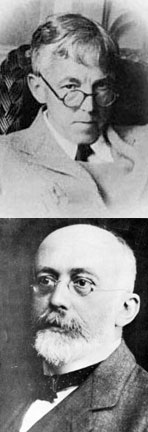 To expand on last week's lesson on evolution, this week in AP Biology we learned how to track evolution. There are a few things you have to know before you can actually track evolution though. One of them is a population, which is a local group of interbreeding individuals. Unlike, most previous ideas evolution does not occur through an individual, but a population. Another thing is a gene pool which is the collection of alleles in a population. To add on to that you need to know what allele frequency, which is how common the specific allele is in that population. A big thing to know is a slightly new and updated definition of evolution. Evolution can now be defined as a change in allele frequencies in a population. This leads us into how to measure evolution.
To expand on last week's lesson on evolution, this week in AP Biology we learned how to track evolution. There are a few things you have to know before you can actually track evolution though. One of them is a population, which is a local group of interbreeding individuals. Unlike, most previous ideas evolution does not occur through an individual, but a population. Another thing is a gene pool which is the collection of alleles in a population. To add on to that you need to know what allele frequency, which is how common the specific allele is in that population. A big thing to know is a slightly new and updated definition of evolution. Evolution can now be defined as a change in allele frequencies in a population. This leads us into how to measure evolution. To measure evolution you need to know the Hardy-Weinberg Equation, and to use this equation the population must be in Hardy-Weinberg Equilibrium. This means there must be a large population, no migration, no mutations, random mating, and no natural selection. Which is pretty much a nonexistent population. So, all of this is hypothetical. Now to look at the Hardy-Weinberg Equation.
p+q=1
p= frequency of dominant allele
q= frequency of recessive allele
Both of the frequencies must add together to equal one. To find the frequency of homozygous dominant, heterozygous, and homozygous recessive you need to use this equation:
p2+2pq+q2=1
p2= the frequency of homozygous dominant
2pq= the frequency of heterozygous
q2= the frequency of homozygous recessive
These two equations serve as a null hypothesis to measure if forces are actually acting on a population.





